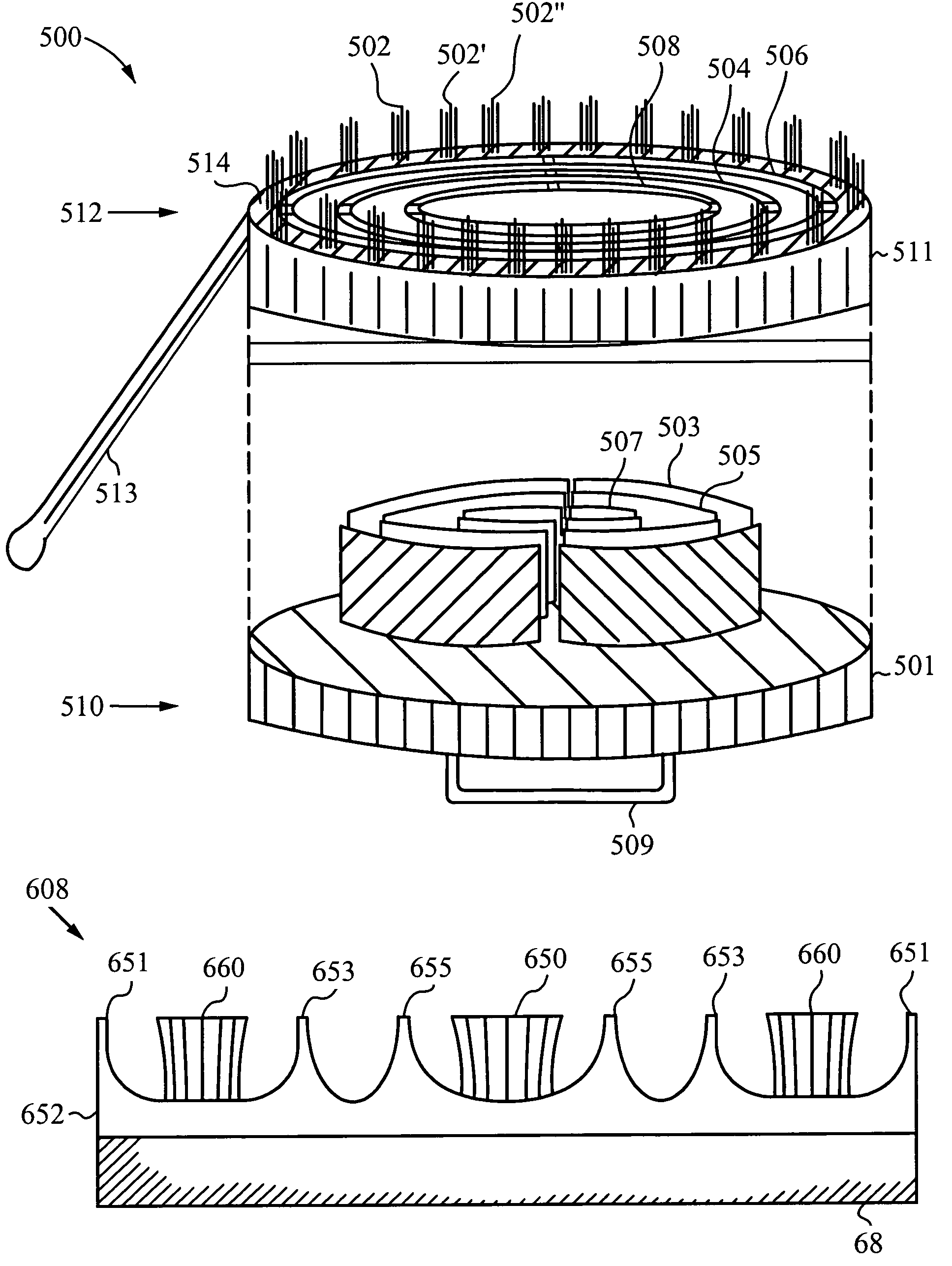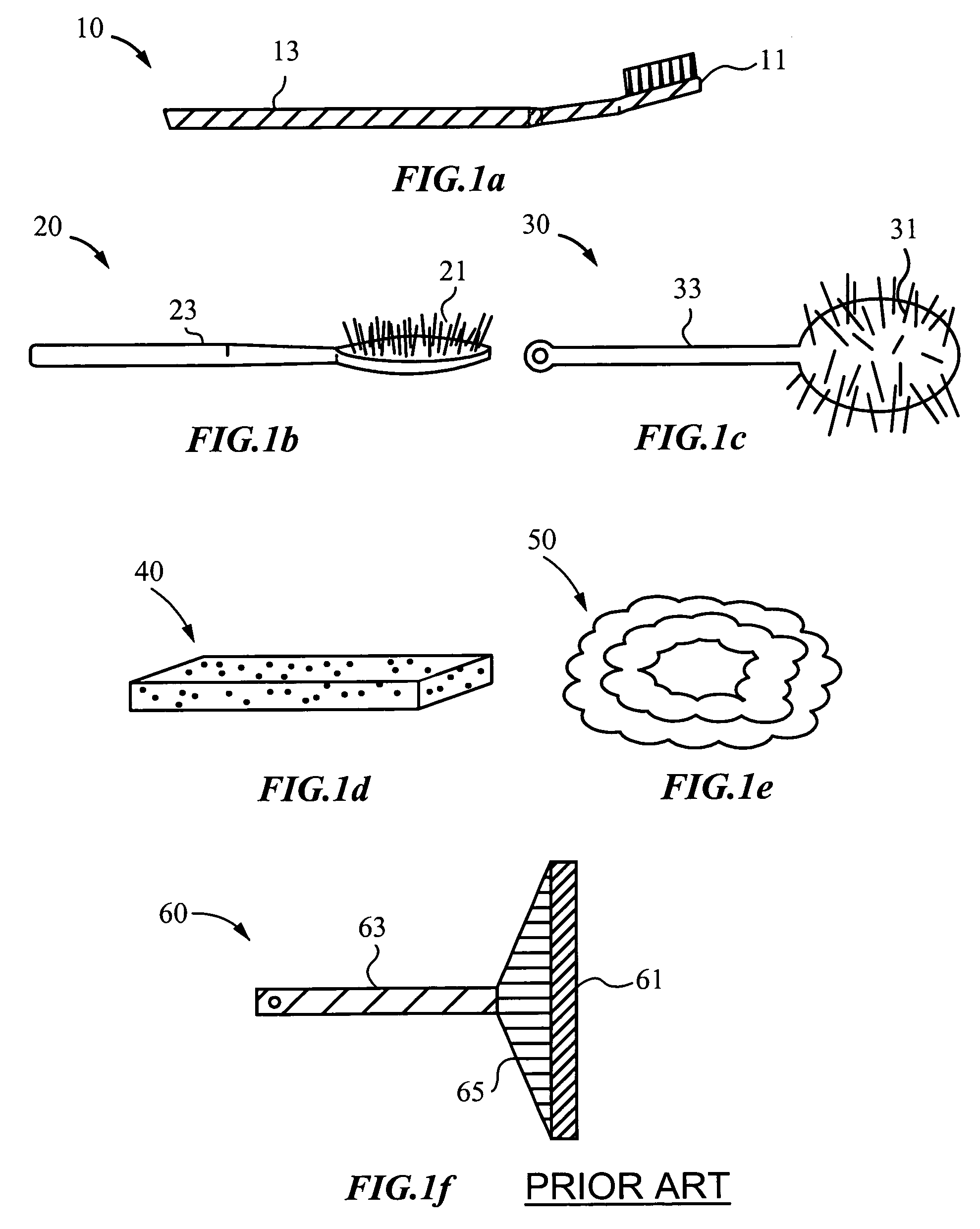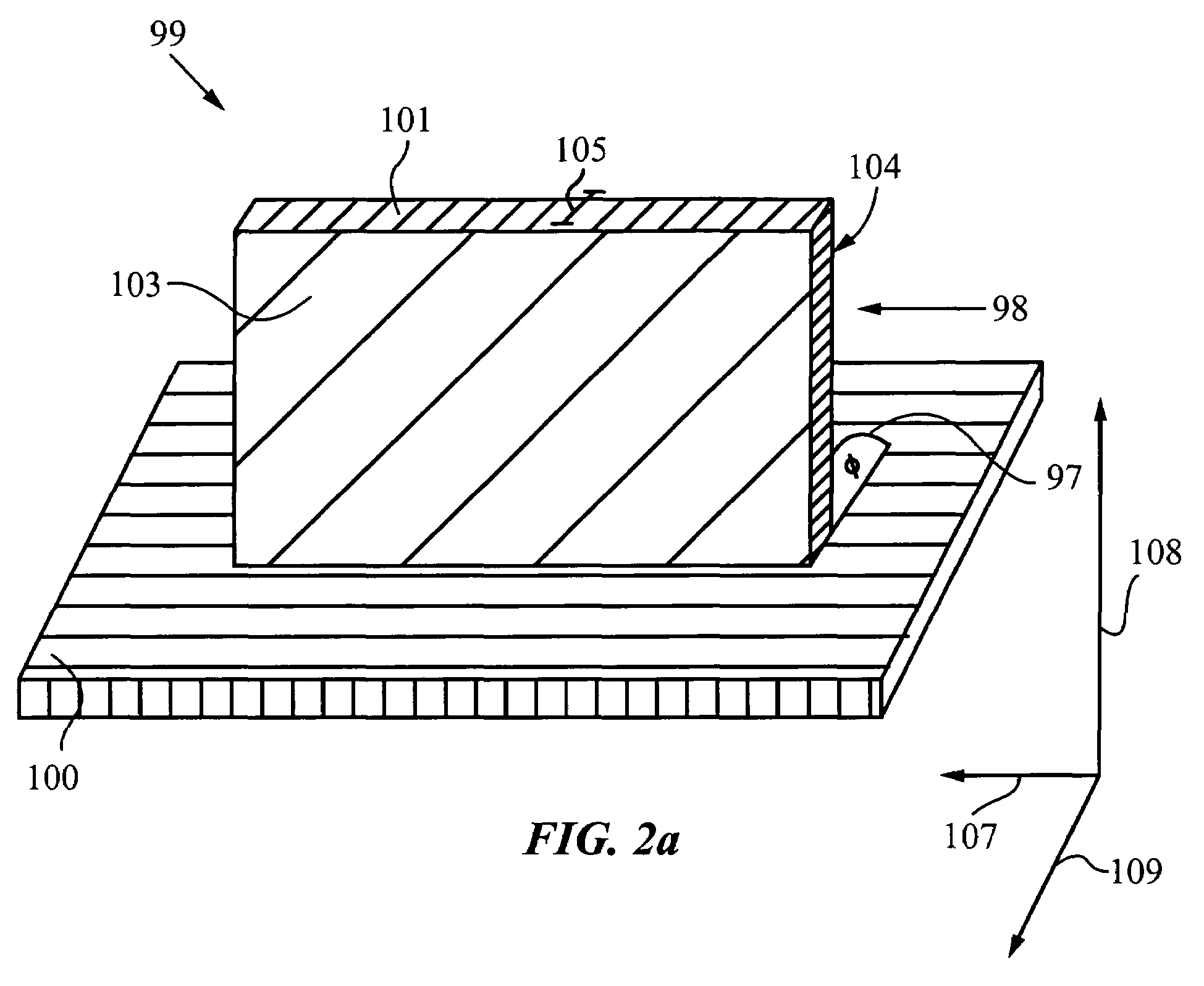Squeegee device and system
a cleaning device and squeegee technology, applied in the field of cleaning devices and cleaning systems, can solve the problems of not being able to optimize the prior art cleaning device for cleaning a surface, many of the devices and systems described above fall short of an ideal cleaning device or system, and the cleaning device is typically used for cleaning the surface of the scouring pad
- Summary
- Abstract
- Description
- Claims
- Application Information
AI Technical Summary
Benefits of technology
Problems solved by technology
Method used
Image
Examples
Embodiment Construction
[0058]Although the following detailed description contains many specifics for the purposes of illustration, anyone of ordinary skill in the art will appreciate that many variations and alterations to the following details are within the scope of the invention. Accordingly, the following preferred embodiments of the invention are set forth without any loss of generality to, and without imposing limitations upon, the claimed invention.
[0059]FIG. 1a–f show several prior art cleaning devices. Many typical cleaning devices employ a brush portion or brush sections that are attached to a supporting structure with a handle. Examples include: a toothbrush 10 with a brush portion 11 supported by handle structure 13, as shown in FIG. 1a; a dish brush 20 with a brush portion 21 and a handle supporting structure 23, as shown in FIG. 1b; and a toilet brush 30 with a multi-directional brush portion 31 connected to a handle support structure 33, as shown in FIG. 1c. A sponge 40, illustrated in FIG....
PUM
 Login to View More
Login to View More Abstract
Description
Claims
Application Information
 Login to View More
Login to View More - R&D
- Intellectual Property
- Life Sciences
- Materials
- Tech Scout
- Unparalleled Data Quality
- Higher Quality Content
- 60% Fewer Hallucinations
Browse by: Latest US Patents, China's latest patents, Technical Efficacy Thesaurus, Application Domain, Technology Topic, Popular Technical Reports.
© 2025 PatSnap. All rights reserved.Legal|Privacy policy|Modern Slavery Act Transparency Statement|Sitemap|About US| Contact US: help@patsnap.com



